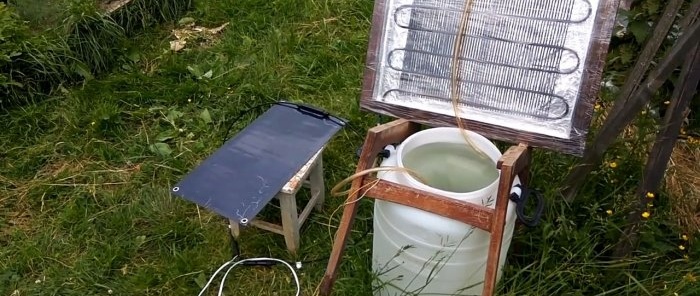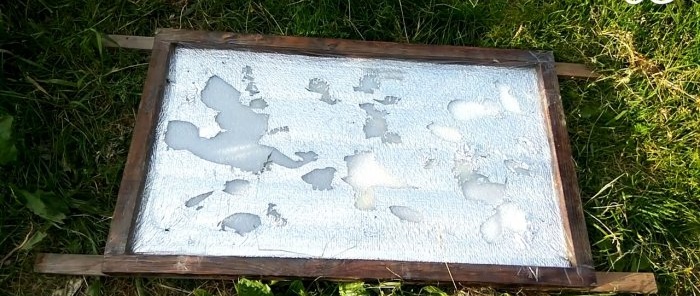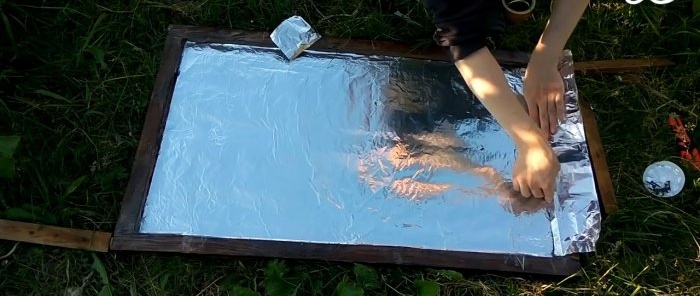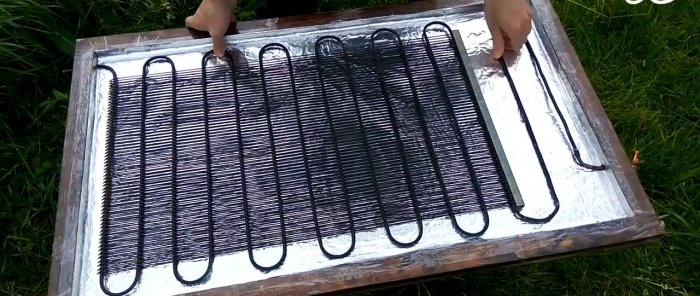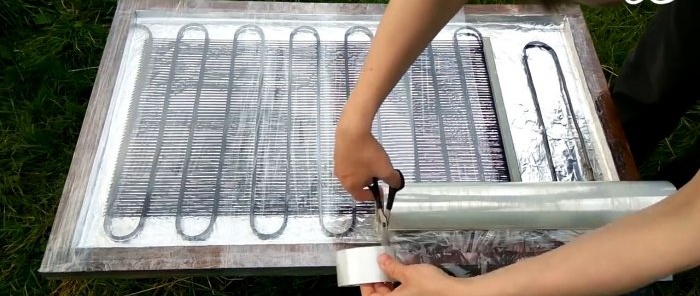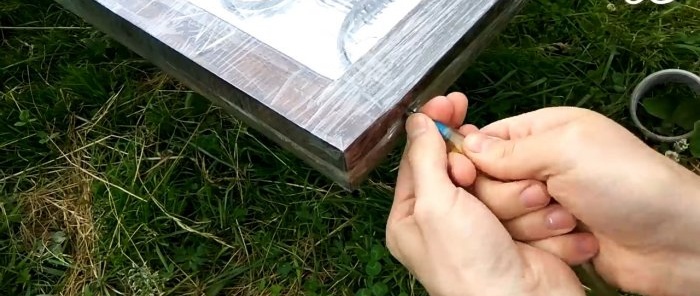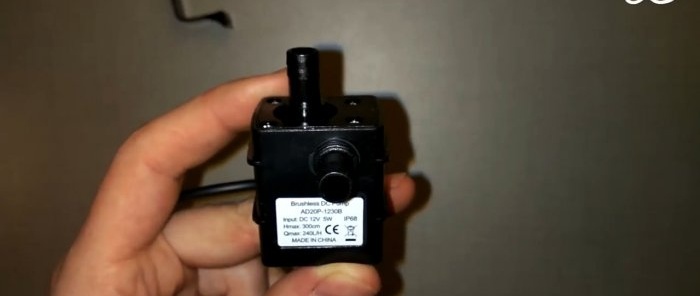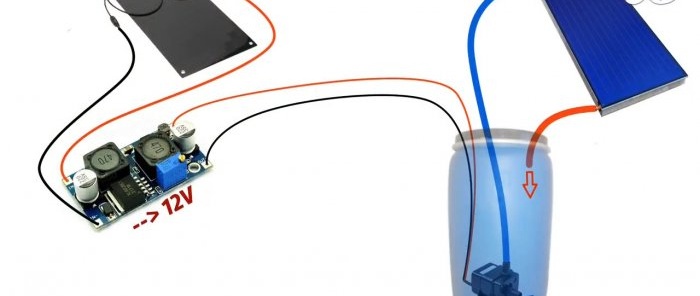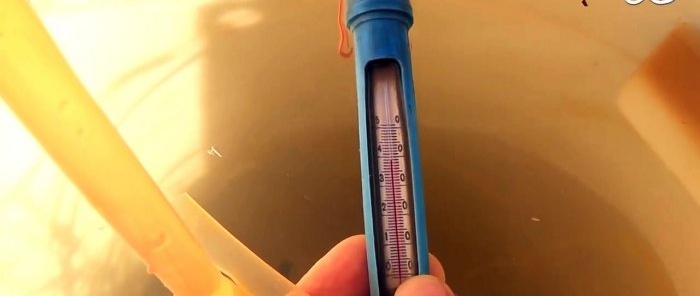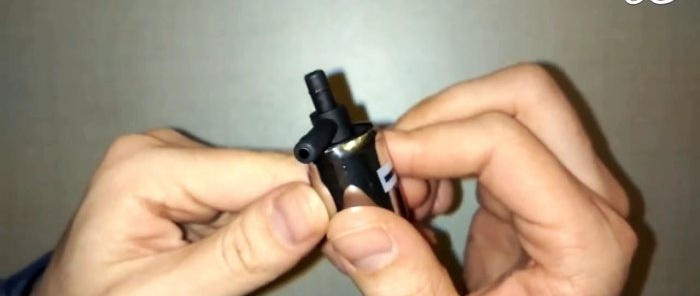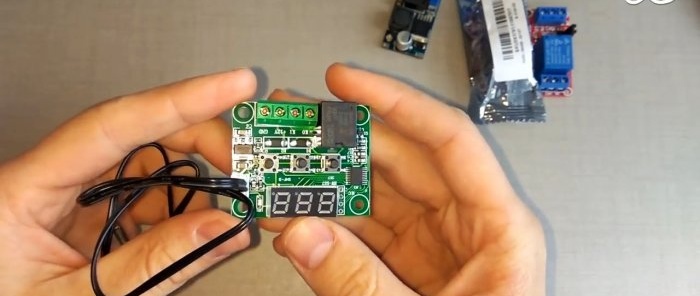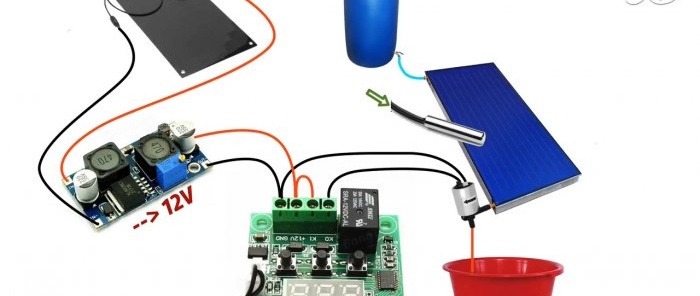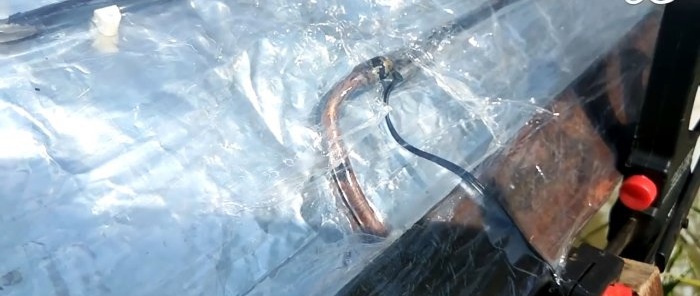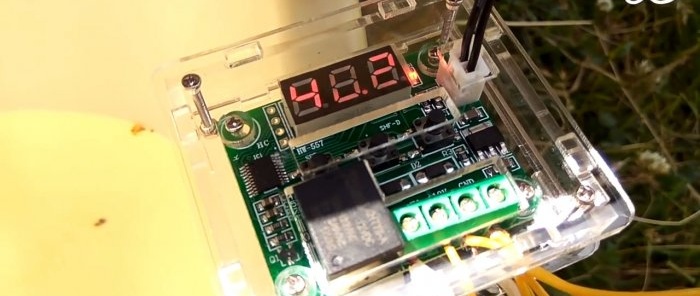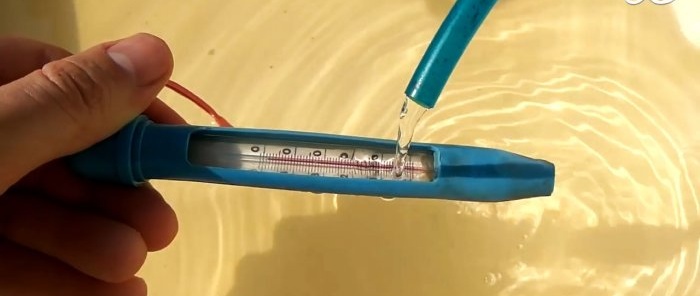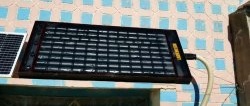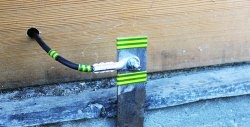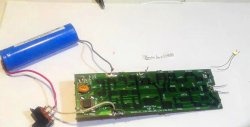How to make a solar collector for heating water in a country house
Having problems with power supply, the issue of obtaining hot water for technical needs is greatly complicated. An effective solution in such a situation would be to use a solar water collector. It will allow you to heat water from sunlight to 40 degrees Celsius or more. At the same time, it can be equipped with various kinds of automatic systems to adapt the hot water supply to the conditions required in a particular case.
The collector body consists of a plywood panel with bars nailed to the edges. Its size is selected in such a way as to accommodate the coil.
The inside of the case is covered with foil, which can be secured with double-sided tape.
A coil is placed on top of the foil. In this case, 2 holes are made in the bars of the body to bring its tubes out.To prevent the coil from dangling, it should be screwed on with self-tapping screws or simply glued with tape.
Next, you need to cover the collector with transparent material. Ideally, use solid glass for this, but you can simply wrap the body with several layers of stretch film.
A hose is then connected to the manifold to circulate water. If its diameter is larger than the tubes, then they can be wrapped with electrical tape.
To ensure heating of water in the container from the collector, it is necessary to ensure its circulation. To do this you will need:
You need to connect a water tank and a collector with hoses, which is located in a sunny place, for example, on the roof of a house. In this case, the tank can be placed indoors. In order for water to move from the collector to the container, you need to install a 12 V submersible water pump in the latter.
A pump capacity of 200-300 l/hour is sufficient. It is important that he is able to raise the column of water to the required height from the tank to the collector.
Since this system must operate autonomously from the central electrical network, it is best to use a solar battery to power the pump. To do this, the pump is first connected to an automatic voltage converter, which is set to output 12 V, and a solar panel is connected to it through the MC4 connectors.
Thus, when daylight hits the collector and solar panel, the water is heated and circulated from the tank to the coil, then drained back into the tank.
It warms up in the coil, so the temperature in the container itself rises.As soon as daylight stops, the panel will stop feeding the pump and it will stop pumping water, which is naturally good, since without the sun the collector no longer works for heating.
This option will allow you to heat a 50-liter tank in summer to 40-50 degrees Celsius in 3-5 hours. This equipment will provide enough water even to fill a bathtub. Moreover, if the tank is insulated, the liquid will not cool down even at night, when there is no heating. To save money, you can take a risk and connect the pump directly to the solar panel without a converter, but this can damage its motor.
If water is used in small volumes, a couple of liters at a time, then the system can be made without a pump at all. To do this you will need:
This system involves placing a water tank on a hill, above the collector. An electromagnetic valve is installed at the coil outlet, which is controlled by a thermostat.
In this case, the latter’s sensor is connected right next to the coil drain. Naturally, a voltage converter must be installed between the solar panel and all equipment.
In this case, as soon as the water in the coil reaches the response temperature of the thermostat, it will apply voltage to the valve, which will open the drain from the collector. The liquid will drain by gravity from the coil into another container insulated like a thermos. As soon as cold water flows, the thermostat will turn off the power to the valve and it will close.
Thus, hot water will be drained into the insulated container periodically as it warms up. This will allow it to be obtained in small volumes, but heated to high temperatures quickly, and not in 3-4 hours.The main thing is that the storage container is effective like a thermos, and the liquid in it does not cool down. Periodically, a couple of liters can be drained from the lower tank for washing dishes, washing hands, etc.
Materials for making the collector
- coil (radiator) from the refrigerator;
- wooden blocks;
- plywood is preferably moisture resistant;
- construction foil;
- stretch film or glass;
- thin PVC or silicone hose.
Water manifold assembly
The collector body consists of a plywood panel with bars nailed to the edges. Its size is selected in such a way as to accommodate the coil.
The inside of the case is covered with foil, which can be secured with double-sided tape.
A coil is placed on top of the foil. In this case, 2 holes are made in the bars of the body to bring its tubes out.To prevent the coil from dangling, it should be screwed on with self-tapping screws or simply glued with tape.
Next, you need to cover the collector with transparent material. Ideally, use solid glass for this, but you can simply wrap the body with several layers of stretch film.
A hose is then connected to the manifold to circulate water. If its diameter is larger than the tubes, then they can be wrapped with electrical tape.
Option for autonomously connecting a collector to heat the entire volume of the tank
To ensure heating of water in the container from the collector, it is necessary to ensure its circulation. To do this you will need:
- submersible pump 12 V;
- solar battery 12 V;
- automatic voltage converter;
- MC4 male/female connector.
You need to connect a water tank and a collector with hoses, which is located in a sunny place, for example, on the roof of a house. In this case, the tank can be placed indoors. In order for water to move from the collector to the container, you need to install a 12 V submersible water pump in the latter.
A pump capacity of 200-300 l/hour is sufficient. It is important that he is able to raise the column of water to the required height from the tank to the collector.
Since this system must operate autonomously from the central electrical network, it is best to use a solar battery to power the pump. To do this, the pump is first connected to an automatic voltage converter, which is set to output 12 V, and a solar panel is connected to it through the MC4 connectors.
Thus, when daylight hits the collector and solar panel, the water is heated and circulated from the tank to the coil, then drained back into the tank.
It warms up in the coil, so the temperature in the container itself rises.As soon as daylight stops, the panel will stop feeding the pump and it will stop pumping water, which is naturally good, since without the sun the collector no longer works for heating.
This option will allow you to heat a 50-liter tank in summer to 40-50 degrees Celsius in 3-5 hours. This equipment will provide enough water even to fill a bathtub. Moreover, if the tank is insulated, the liquid will not cool down even at night, when there is no heating. To save money, you can take a risk and connect the pump directly to the solar panel without a converter, but this can damage its motor.
Connection for quick heating of small volumes of water
If water is used in small volumes, a couple of liters at a time, then the system can be made without a pump at all. To do this you will need:
- a solar panel;
- automatic voltage converter;
- electronic thermostat with sensor;
- solenoid valve for water.
This system involves placing a water tank on a hill, above the collector. An electromagnetic valve is installed at the coil outlet, which is controlled by a thermostat.
In this case, the latter’s sensor is connected right next to the coil drain. Naturally, a voltage converter must be installed between the solar panel and all equipment.
In this case, as soon as the water in the coil reaches the response temperature of the thermostat, it will apply voltage to the valve, which will open the drain from the collector. The liquid will drain by gravity from the coil into another container insulated like a thermos. As soon as cold water flows, the thermostat will turn off the power to the valve and it will close.
Thus, hot water will be drained into the insulated container periodically as it warms up. This will allow it to be obtained in small volumes, but heated to high temperatures quickly, and not in 3-4 hours.The main thing is that the storage container is effective like a thermos, and the liquid in it does not cool down. Periodically, a couple of liters can be drained from the lower tank for washing dishes, washing hands, etc.
Watch the video
Similar master classes
Particularly interesting
Comments (2)

